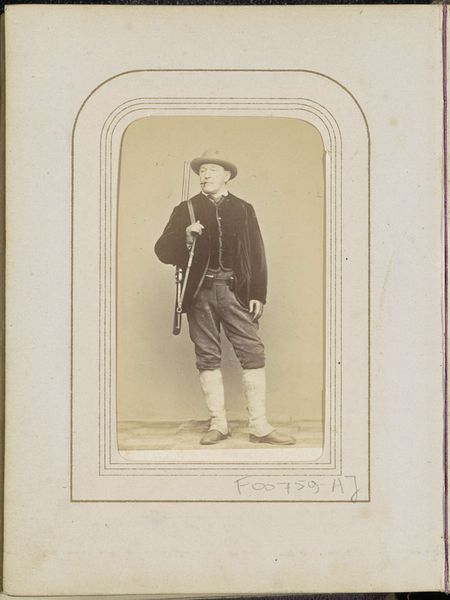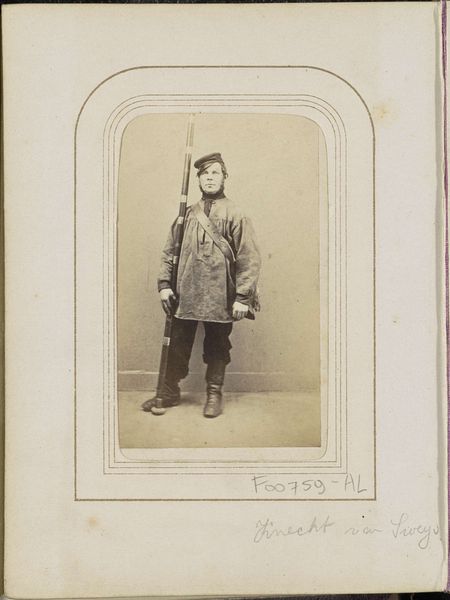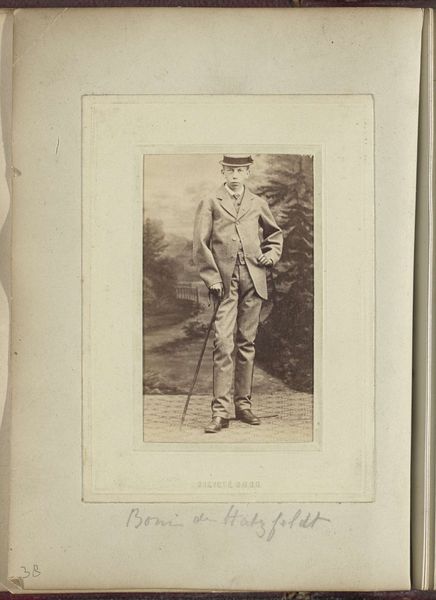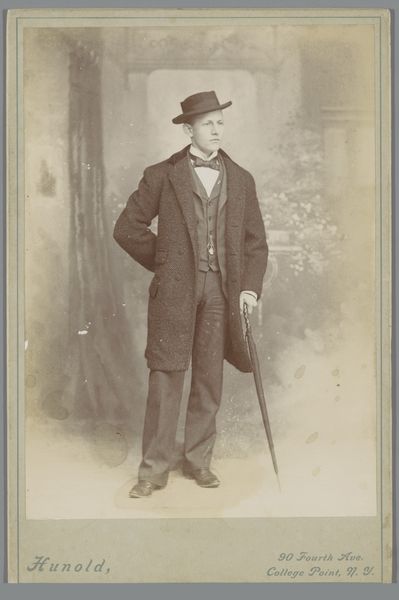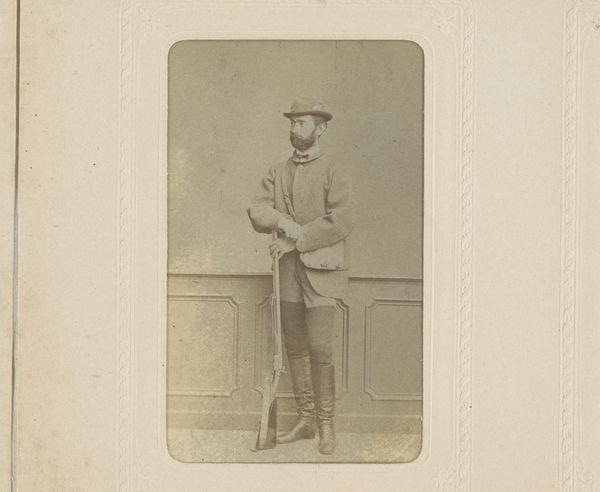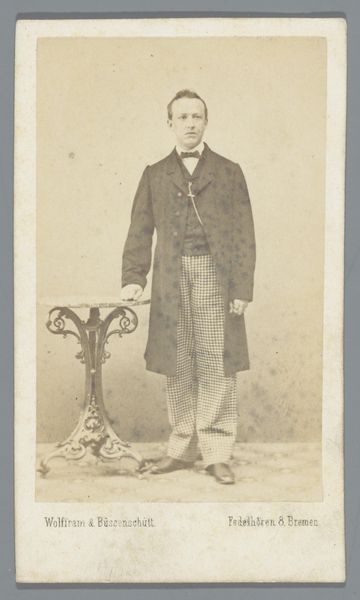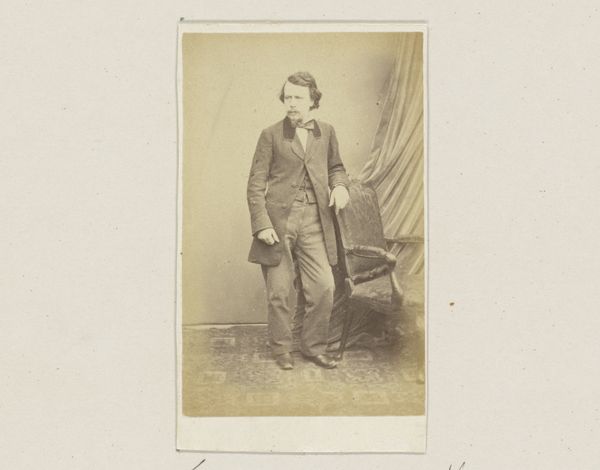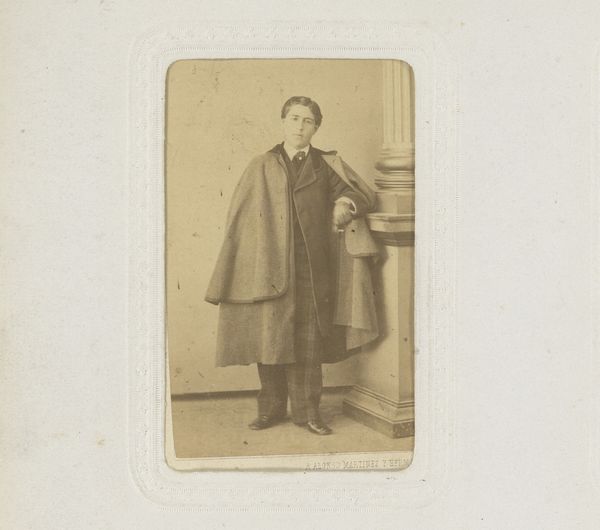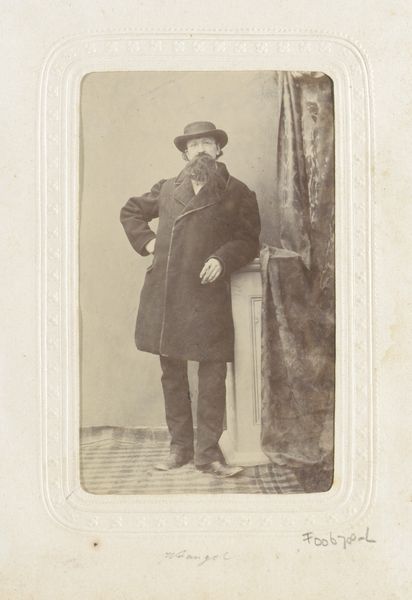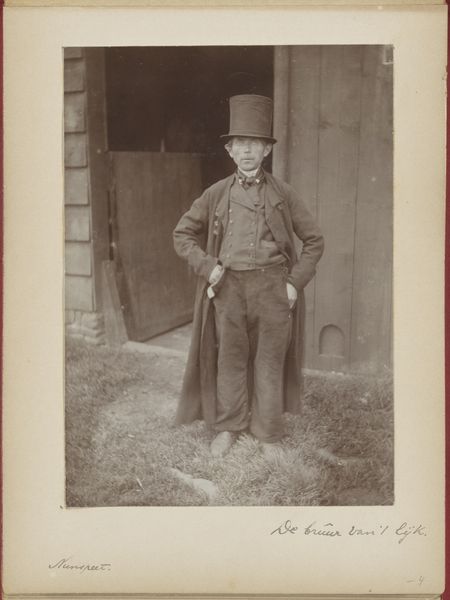
Portret van een man in jachtkleding, aangeduid als Sweys (oude) c. 1860 - 1875
0:00
0:00
wegnermottu
Rijksmuseum
photography
#
portrait
#
photography
#
genre-painting
Dimensions: height 85 mm, width 51 mm
Copyright: Rijks Museum: Open Domain
Editor: This is a photograph titled "Portret van een man in jachtkleding, aangeduid als Sweys (oude)," made around 1860-1875 by Wegner & Mottu. It's currently at the Rijksmuseum. He looks quite stern in his hunting outfit, like this photograph captured a moment of idealized masculinity of the time. How do you interpret this portrait? Curator: Well, I immediately think of the material conditions surrounding its production. It’s photography, so it was a new medium. How did Wegner & Mottu, the studio, operate? Who were their clients? Did this sitter choose hunting garb to align himself with a specific social class, or was this a means to democratize aristocratic representations? The physical act of producing, consuming, and owning such a portrait then becomes the most telling narrative here. Editor: That's a fascinating approach, considering photography's role in potentially democratizing portraiture. How does the material nature of photography itself - the chemicals, the printing process, even the paper - inform our understanding of the subject? Curator: Precisely. Photography was a messy, involved *process*. Examining the material, its production process, reminds us this wasn't some objective capture. It was labor. Also, who decided what chemicals to use to give it a slightly sepia tone and who were the laborers responsible for mixing those chemicals? Those decisions inform what was captured as it exists today and adds richness to that idea of idealized masculinity we were discussing earlier. It adds context to this man's apparent status. Editor: So by considering the process and material, we can question the surface level and think about the deeper social and even economic contexts that photography like this one both relied on and also helped to reinforce. Curator: Absolutely. The ‘what’ and ‘how’ of its making is just as crucial, maybe even more, than the subject staring back at us. Editor: This perspective really highlights how even a seemingly straightforward portrait can reveal complex systems of labor, materials, and social values. Thank you. Curator: My pleasure. Material analysis can really offer fresh perspectives.
Comments
No comments
Be the first to comment and join the conversation on the ultimate creative platform.
